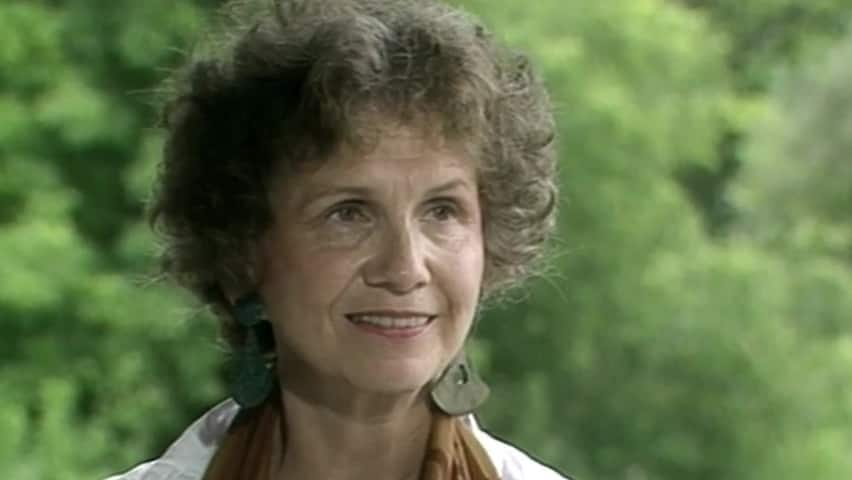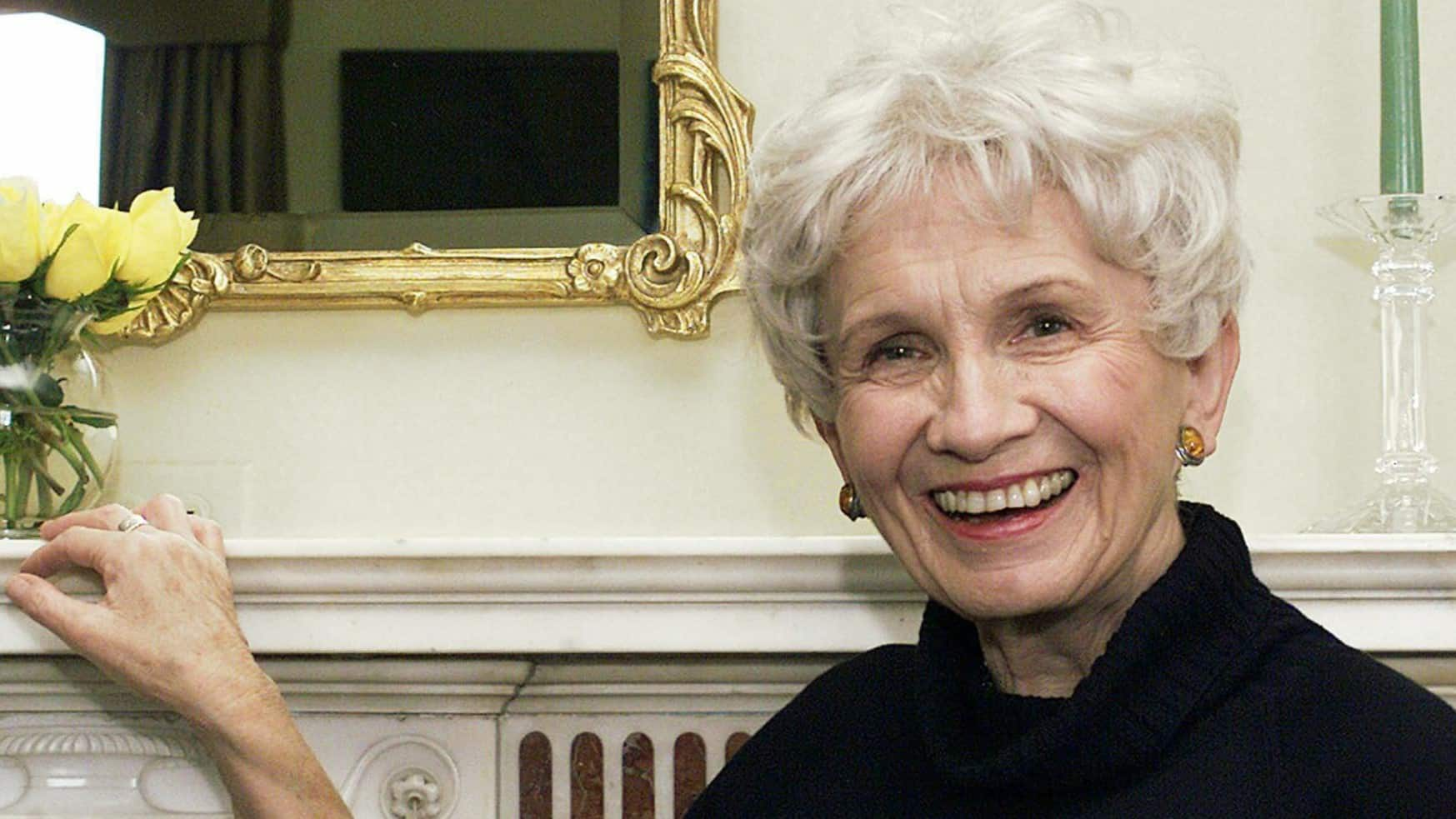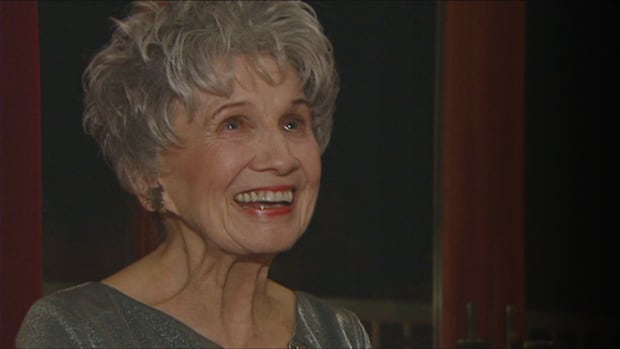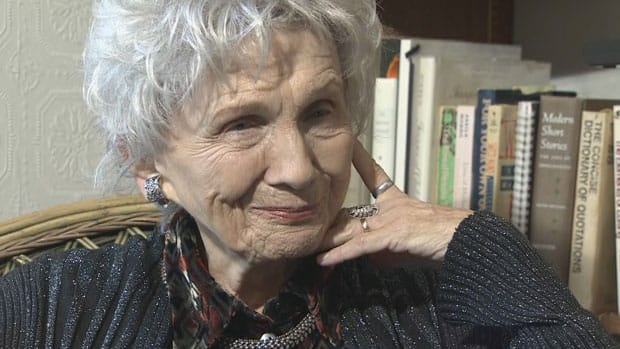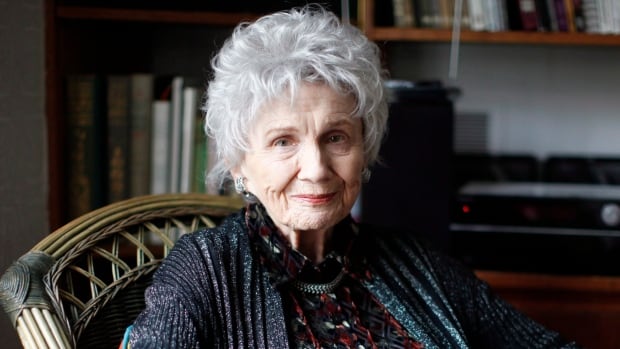
Alice Munro, a Canadian author who was revered worldwide as master of the short story and one of few women to win the Nobel Prize in Literature, has died at the age of 92.
Her publisher said she died at her home in Port Hope, Ont., on Monday evening.
“Alice Munro is a national treasure — a writer of enormous depth, empathy, and humanity whose work is read, admired, and cherished by readers throughout Canada and around the world,” read a statement from Kristin Cochrane, CEO of McClelland & Stewart, which is owned by Penguin Random House Canada.
“Alice’s writing inspired countless writers too, and her work leaves an indelible mark on our literary landscape.”
Munro wrote more than a dozen acclaimed collections over the course of her career, seamlessly blending ordinary people with extraordinary themes — womanhood, restlessness, aging — to develop complex characters with the nuance, depth and clarity most writers can only find in the wider confines of a novel.
In honouring her with the Nobel Prize in Literature in 2013, the Swedish Academy hailed Munro as “master of the contemporary short story,” affirming what her peers, critics and readers had proclaimed for years.
“Alice Munro was one of the world’s greatest storytellers. Her short stories about life, friendship, and human connection left an indelible mark on readers. A proud Canadian, she leaves behind a remarkable legacy,” read a statement from Prime Minister Justin Trudeau on Tuesday.
“On behalf of the Government of Canada, I offer my condolences to Mrs. Munro’s family, friends, and many fans. Her creativity, compassion, and gift for writing will remain an inspiration for generations.”
Early years in small-town Ontario
Munro was born Alice Laidlaw in Wingham, Ont., on July 10, 1931. The eldest child of Robert and Anne Laidlaw, she was raised on what she described as a “collapsing enterprise of a fox and mink farm” in the throes of the Great Depression.
An avid reader by 11, Munro was drawn to the work of literary legends Lucy Maud Montgomery and Charles Dickens. She began “making up stories in her mind” after discovering the works of Alfred Tennyson, according to her official Nobel biography.
Alice Munro talks to Midday host Tina Srebotnjak about the craft of writing fiction. Aired July 5, 1990.
As the eldest child, Munro took on most of the domestic roles in the household after her mother, who had been a schoolteacher, was diagnosed with Parkinson’s disease. Though only 12 or 13, Munro said the work gave her “a sense of responsibility, purpose, being important. It didn’t bother me at all.”
Despite the family challenges, she began writing short stories when she was a teenager. She graduated valedictorian of her high school class in 1949 with a two-year scholarship to the University of Western Ontario in London.
Her first published story, The Dimensions of a Shadow, appeared in Western’s undergraduate creative writing magazine, Folio, in the spring of 1950. Two more pieces followed, with all three receiving praise for their exploration of the lives of girls and women.
It was there that she met and began dating honours history student James Munro. She also noticed Gerald Fremlin, an older student and another contributor to Folio. Laidlaw and Munro married at her parents’ home in Wingham on Dec. 29, 1951. The following year, James gave his wife a typewriter as a 21st birthday present.
The Munros had three daughters — Sheila, Catherine and Jenny — in the early years of their marriage. (Catherine died the same day she was born.) Munro left university when the scholarship money ran out and the family eventually settled in West Vancouver’s Dundarave neighbourhood.
The monotony of the girls’ early years was reflected in 1978’s The Moons of Jupiter, which described “wives yawning, napping, visiting, drinking coffee, and folding diapers; husbands coming home at night from the city across the water.”
“We had become a cartoon couple, more middle-aged in our twenties than we would be in middle age,” she wrote.
Over the years, Alice Munro was interviewed by the CBC many times. Here are some memorable moments.
Devotion to the short story
Munro later said she devoted her career to the short story medium — regarded by many as notoriously difficult and by others as inferior to the novel — because the demands of marriage and motherhood didn’t allow her the time to complete longer works.
In 1963, the Munros moved to Victoria and opened Munro’s Books on Yates Street. Munro credits the bookstore, which made a “marvellous” $175 on its first day and is still flourishing, as helping her overcome the writer’s block she experienced from her mid-20s to her mid-30s: “The writing ceased to be this all-important thing that I had to prove myself with. The pressure came off.”
“Just as she would shape Munro’s, Munro’s would shape Alice,” the shop wrote in a tribute to its founder. “Jim enjoyed recounting his wife’s urge to write something better than the ‘crappy books’ that sold alongside the store’s more palatable titles.”
In an interview with BC Today host Michelle Eliot, Justina Elias, head of fiction at Munro’s Books, remembers Alice Munro as an author whose writing could not be emulated. The Nobel Prize-winning author died on Monday at the age of 92.
Munro’s first collection of stories, Dance of the Happy Shades, was published in 1968 — two years after she gave birth to her fourth daughter, Andrea. The anthology drew attention from other Canadian literary giants such as Margaret Atwood and earned her comparisons to the famed Russian short story writer Anton Chekhov.
After her marriage ended in 1972, Munro moved back to Ontario. She reconnected with Fremlin — whom she’d shared pages with in Folio back at Western — after he deduced from an interview of hers on CBC Radio in 1974 that she was back in Ontario. The pair married and moved to Clinton, Ont., not far from her hometown in Wingham.
Fremlin, a retired geographer and cartographer, was the one to use the office in the couple’s home. Munro opted to write at a tiny desk facing a window overlooking the driveway from the corner of their dining room, according to a 2013 profile.
‘Not under any illusion that it was the only good book around’
International recognition came after the New Yorker bought its first Munro story, Royal Beatings, in 1977. Munro nurtured a decades-long publishing relationship with the magazine, cementing the Canadian author’s status with an elite group of contributors who defined the American publication’s celebrated love affair with short fiction.
An unapologetic revisionist, Munro was known to keep reworking stories even after her publisher had sent them back without asking for any changes.
In one instance, she personally paid financial penalties in order to add an entirely new story and change the voice from first to third person after the printing deadline for Who Do You Think You Are? — a collection of short stories that went on to win Munro the Governor General’s Award in 1978.
Munro won a litany of literary honours over the next decades of her career, including two more Governor General’s Awards, two Giller Prizes and the Man Booker International Prize. She also received an honorary degree from her alma mater, Western University — the “only such honour” she ever accepted, the school has said.
Writers and Company52:46Alice Munro on Runaway
A rare conversation with Canada’s first winner of the Nobel Prize in Literature. In this interview from 2004, Eleanor speaks with Munro about her Giller Prize-winning collection of short stories, Runaway.
In mid-2013, shortly after the death of her second husband, Munro told the National Post that she was content with her career and “probably not going to write anymore.”
She won the Nobel Prize in Literature that October, becoming the 13th woman to receive the honour.
In an interview with CBC after her Nobel win, Munro said: “I think my stories have gotten around quite remarkably for short stories, and I would really hope that this would make people see the short story as an important art, not just something that you played around with until you’d got a novel written.”
Munro’s last collection of work, Dear Life, was published in 2012. She introduced the final four stories in its pages, called Finale, as “autobiographical in feeling”, if only partly.
“I believe they are the first and last — and the closest — things I have to say about my own life.”
